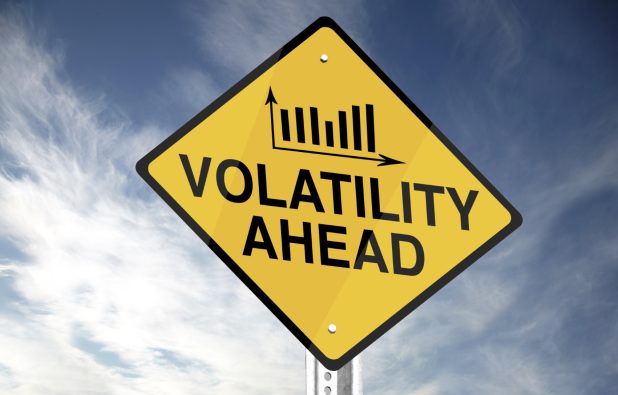We are all aware that the wizard behind the proverbial curtain is represented by the banks in these modern times.
Whether referring to interest rates, international monetary policies or inflation, the fact of the matter is that these institutions impact our daily lives.
One of the catch phrases associated with 2017 is financial volatility. While such economic data makes the news every day, the majority of consumers are unaware of how this volatility impacts the banks and their monetary decisions.
Let us take a closer look at this relationship and see if there are any conclusions which can be drawn from these observations.

Volatility Defined in Relation to the Banks
Economic volatility is actually quite a broad topic, so for the sake of this article it will be defined as the scope of swings in major market indices such as the Dow Jones or the FTSE. Increased levels of volatility generally indicate that the risks associated with investments are higher than they would be in a relatively stable environment.
In theory, it is the responsibility of the banks to curtail this volatility by taking measures such as manipulating interest rates and injecting more capital into the economy (quantitative easing). So, how can volatility influence the decisions of major financial institutions?
Tighter Lending Policies
This should already be quite obvious. When banks are afraid that they will lose a certain amount of their capital through bad investing decisions, they are much more likely to tighten their lending policies. This can affect businesses, consumers and even entire governments. A shining example of this stance can be seen in the reticence of the IMF to provide Greece with an additional bailout loan.
What is quite interesting is that the past policies of the IMF such as “loose lending” may have contributed to the problem in the first place.
Decreased Profit Margins for Banks
Most investors are fully aware that highly liquid (volatile) markets are those associated with turning the highest profit margins. Banks have taken this very same stance. When the volatility index is at multi-year lows, large banks begin to worry about profitability and profits. Michael Hewson at CMC Markets says that this is one of the reasons why we have witnessed a rather substantial decline in American bank shares recently. As bankers continue to worry, the values of these institutions may take a further hit.
“Black-Hat” Tactics?
While the ultimate goal of the banks is to decrease volatility, there have been some vocal critics of these institutions. For example, banks have been known to use underhanded tactics such as false interest rate manipulation and even asset bubbles with the intention of creating further volatility (and therefore higher profit margins) in the future. When the misallocation of capital is encouraged (or at least not properly regulated), the average consumer could be the ultimate loser.
The main confounding point is that it is very difficult to gauge the discrete effects that banking decisions have upon stock prices. There are few technical indicators which provide a clear picture. The main method is to view volatility indices over a period of time and then attempt to correlate these with actions taken by central banks. Either way, the banks are very much the “silent partners” in terms of global economic trends.
Source Article from http://www.hangthebankers.com/how-market-volatility-affects-the-global-banking-system/
 RSS Feed
RSS Feed















 June 2nd, 2017
June 2nd, 2017  Awake Goy
Awake Goy  Posted in
Posted in  Tags:
Tags: 













